
Winning the Champagne Scholarship has done many good things to me. One of these is getting invited to prestigious wine tasting events which I would not have otherwise foreseen myself as attending- being not originally from the wine profession. So when I received the invite from the Group Ritu office (organisers of the event) to attend an exclusive tasting of the 2009 vintage of Bordeaux Grand Cru wines, my joy new no bounds. The prospective of tasting several Grands Crus wines within a span of two hours under one roof is an opportunity that any wine lover would give his right arm-for; and there I was with an invite in my hands! This was an inaugural event in India by Union des Grands Crus de Bordeaux, an association of 132 grands crus estates that has been hosting tastings of Grand Cru wines from Bordeaux worldwide.
Grands Crus are formally documented Quality Wine Producing Specific Regions (QWPSR) in Bordeaux, France with the initial classification taking place in 1855 A.D. (Napoleonic era) followed by subsequent additional classifications in the 20th century after World War- II. These areas have strict regulations in place to ensure the right kind of cultivation and production practices to ensure consistently high quality wines.
The D-day was 25 May 2012 and the venue- The Oberoi Hotel, Gurgaon, India. As I entered the lobby, I saw famous faces from the wine world engaged in intimate discussions. Picking up my registration card and a Tasting Note Book from the reception, I soaked in the ambience through the glass façade of the beautifully landscaped hotel. The event kicked-off shortly thereafter as we entered the expansive hall where tables with wines from different producers were set up in a quadrangular fashion with islands in between. Carrying out an initial recce of the hall, I tried to figure out the optimal sequence of tasting the wines on offer and marked it on the respective pages of the very functional and thoughtfully crafted Tasting Booklet provided at the Registration Desk. For tasting (or Dégustation as the French call it) of several wines on a single occasion, the widely accepted guidelines are:
- Whites to be followed by Reds and Sweet wines towards the end.
- Lighter to Fuller bodied wines.
- Subtle to intensely flavoured wines
Keeping with these guidelines, I started tasting the wines from various producers.The highlights of the tasting were:-

Whites
Bordeaux whites are produced using two main grape varieties viz. Sauvignon Blanc and Semillon. In certain wines Muscadelle is also used. The proportion of these grapes is the main determinant (amongst other factors of soil type, production methods etc)of the final character of the wine. In the context of Bordeaux, while a Sauvignon Blanc predominant wine is more aromatic with vegetal and stone fruits (peaches, apricots etc) flavours, Semillon lends it more alcohol and the resultant fuller body. Muscadelle increases the aromatic character and smoothness of the wine. Psychological factor of Grands Crus apart, most of the wines were refreshing and pleasing to the palate with my favourite top three being:
- Chateau Larrivet Haut Brion (Pessac Léognan)- 80% Sauvignon Blanc, 20% Semillon.
- Chateau Carbonnieux (Pessac Léognan)- 65% Sauvignon Blanc, 35% Semillon.
- Château Malartic Lagraviere (Pessac Léognan)- 80% Sauvignon Blanc, 20% Semillon.
Reds
The reds from Bordeaux are more difficult to appreciate than the whites at a young age of three years. But seasoned tasters sample these mostly to figure out as to how these wines would evolve after a few years i.e. 10 years and later. The constituent grape varieties are mainly Cabernet Sauvignon and Merlot with some wines having a proportion of Cabernet Franc, Malbec and Petit Verdot. The wines from the left bank of the Gironde estuary (flowing into Bordeaux from the Atlantic Ocean) are dominated by Cabernet Sauvignon, while those from the right bank have Merlot as the main component. This also translates into the reality that the right bank wines are ready to be drunk comparatively earlier than their left bank counterparts; but then the desired point on the continuum between early drinkability and complexity is something which is based on personal preferences.
As for me, I tried to decipher the various reds based on two parameters; firstly on the nature of tannins -whether they were round (pleasing) or square (not so pleasing) and secondly, the length of the wine i.e. the lingering taste in the mouth. It was a tough job though, because of the palate getting tired after tasting four to five wines continuously and forcing me to take a stroll every now and then to the area where water and munchies were placed to refresh the palate. My favourite reds were:-
- Chateau Franc Mayne (St Émilion)- 90% Merlot, 10% Cabernet Franc.
- Château Gazin (Pomerol)- 90% Merlot, 7% Cabernet Sauvignon, 3% Cabernet Franc.
- Château Dauzac (Margaux)- 60% Cabernet Sauvignon, 40% Merlot.

True to the proverbial context, the icing on the cake was the sweet wine – an amorous Chateau Doisy Daene from the famous Sauternes and Barsac area. With 87 % Semillon (The grape famous for its susceptibility to Noble Rot) and 13% Sauvignon Blanc, the wine had a text book balance of sweetness and acidity, so much so, that I felt compelled to ask for a second serving from the charismatic representative of the Chateau. Thus concluded my tasting experience on a heavenly sweet note and a lingering wish to get further such opportunities of grand tastings!





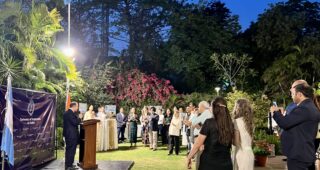
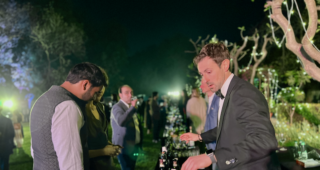
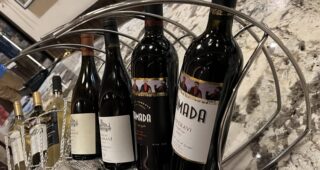

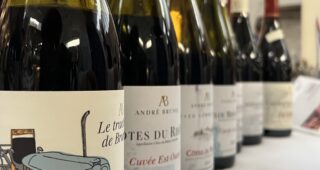
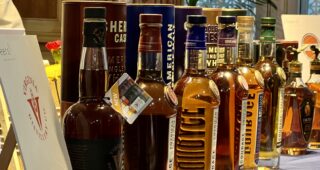
3 Comments
Very informative & well written article… looking forward for ur next wine n café meet…..
Thanks and sure Ma'am. I would say- Très bientôt!
very nice sir . u r doing nice.great time that u had nice chateu wines.nice information u shared with us.